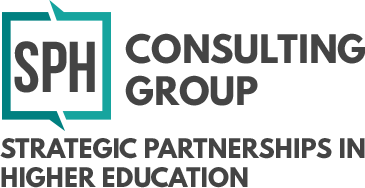The ten-year trend: A powerful strategic assessment tool
January 29, 2024

Higher education, and the communities that the institutions sit in, has been facing an increasing number of closures. It seems that every week there is another college or university announcing that it is closing. Or what is worse, simply closing without announcement.
A frequent question that I am asked is how the board and their appointed leadership did not recognize that the institution was in deep trouble. To be fair, many leaders did recognize that their school was about to crash on rocky shoals. But generally, they do so too late, and despite frequent heroic efforts, the institution closes. Because by the time the alarms sound most schools have little remaining in the way of unencumbered financial assets, brand name, and students.
Why is recognition that a school is headed for deep trouble so late in coming? One reason is the way institutional leaders assess the state of the school.
When examining the health of any organization, governing board members and executive leaders look to select key performance indicators (KPIs). For colleges and universities these generally include measures of student enrollment and success, and financial condition. Often these are presented denoting the variance comparing this year to last. And for many boards that is where the examination ends. Either celebrating wins or recognizing losses and listening to proposals for improvement. The tendency to examine and compare two consecutive fiscal years is based on various intrinsic and psychological drivers.
It is simple. It highlights the results of leadership’s most recent efforts (“Did the implementation of this tactic make a difference?”). It meets the competitive nature of many leaders and their boards (“Did we do better than last year?”). It is often tied to incentive payments to executive leaders. And, most importantly, losses over one year are less painful to grasp, face, and rationalize, than are greater, persistent declines over longer periods of time.
However, year-to-year comparisons are frequently misleading. Especially in a climate that is both erratic and changing faster than most higher ed leaders are accustomed to which is similar to our current higher education environment. Which is how boards and leaders often miss longer term and pervasive trends.
When SPH Consulting Group is invited to assist an institution in gauging their future strategy, often including finding a merger partner, one of the most powerful tools we employee are analyses of 10-year trends for select KPIs. Trends that clearly demonstrate the direction of revenues, net assets, endowment monies, enrollment, and much more.
For example, an institution’s year-to-year comparison may demonstrate an enrollment increase relative to last year of 0.7%. A positive and hopeful number. But a number that is assessed differently when the school is observed to have lost 36% of its students in the past decade.
While creating and leveraging these decade-long trends requires understanding the changes that occurred in mandated reporting, accounting, or other regulatory requirement (often involving changes to generally accepted accounting principles or GAAP), they are invaluable in demonstrating the true state of affairs of an institution. However, I would note that the use of these trends also requires greater education of board members, including situating the numbers and trendlines being projected within the higher education, economic, and regulatory landscape of the time.
Nonetheless, the ready and frequent use of carefully curated ten-year trends in our due diligence provides our clients with invaluable data regarding the true existential threats to their institution – and the possible strategies and tactics to face them.
Contact us at office@sphconsultinggroup.com to learn more about SPH Consulting Group and how we can help your organization.
Writer: Ricardo Azziz, Principal, SPH Consulting Group.
